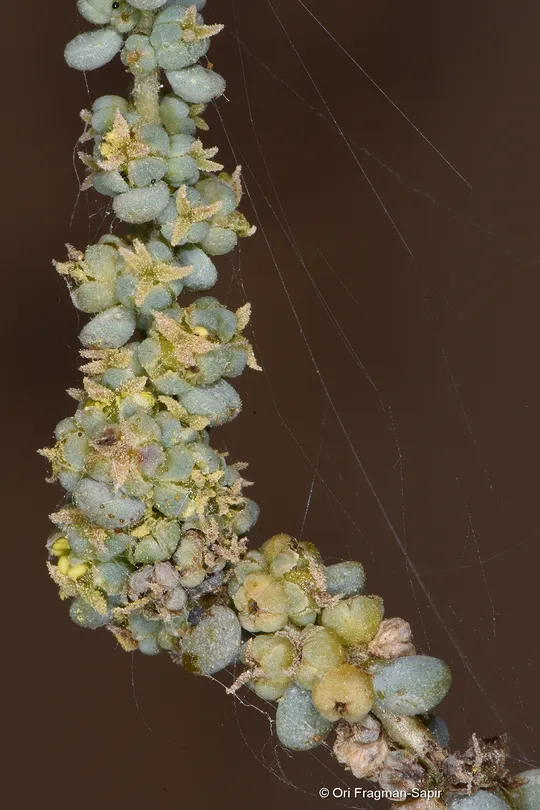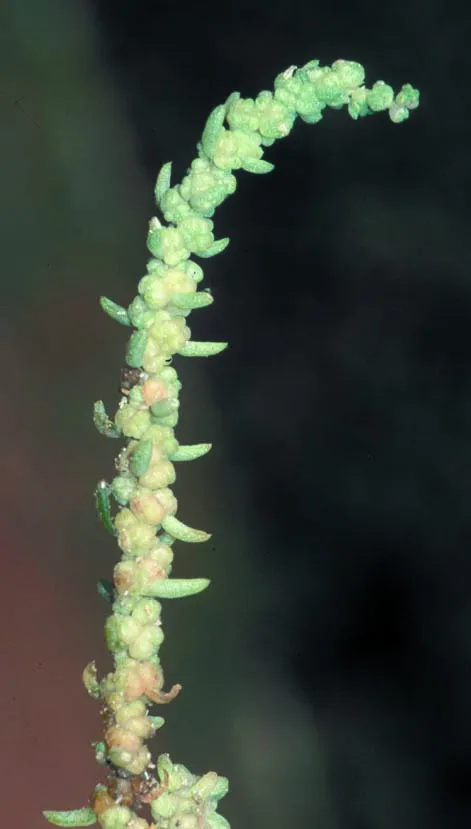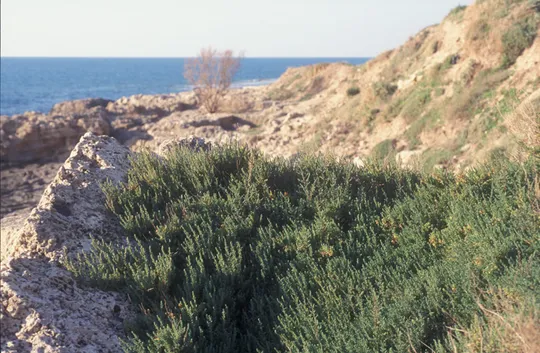Monoecious Seablite
Suaeda monoica
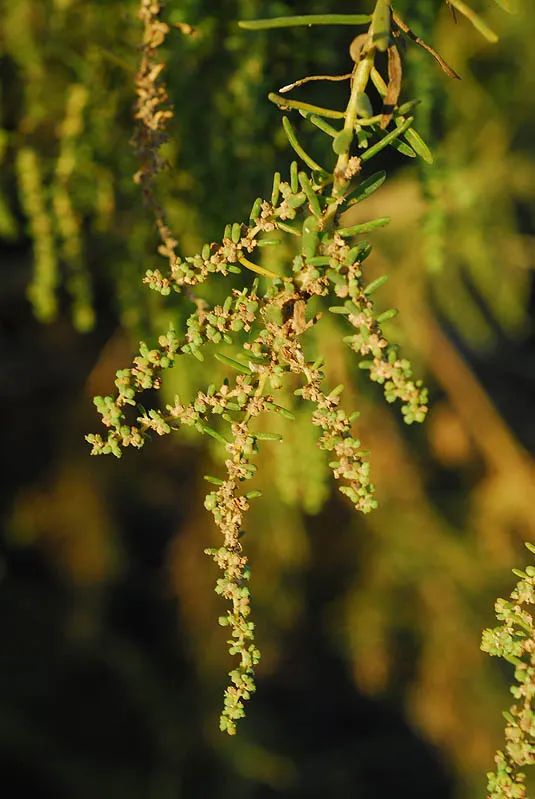
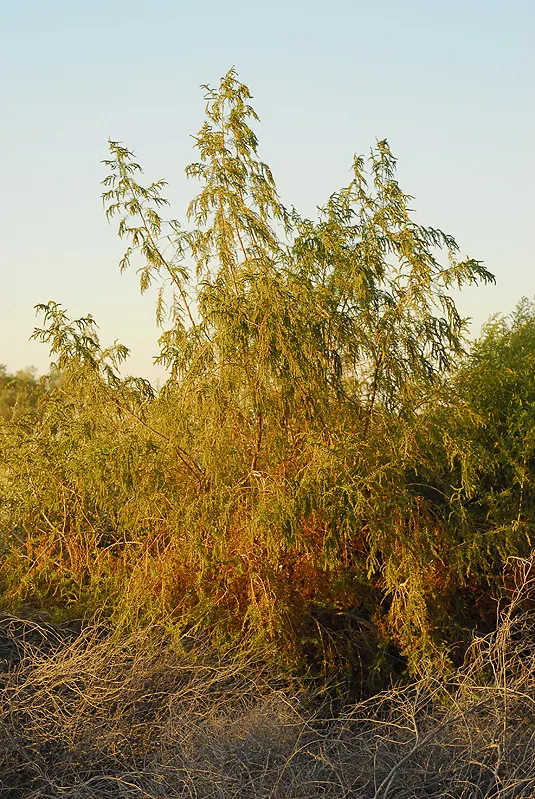
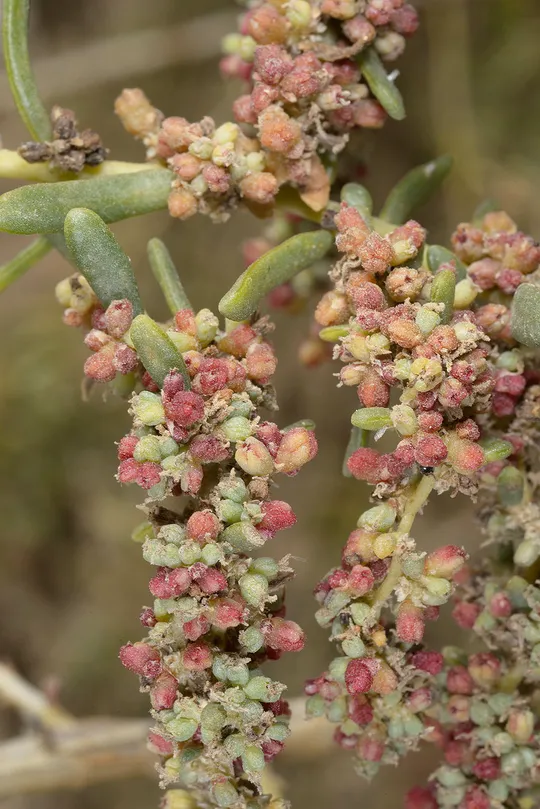
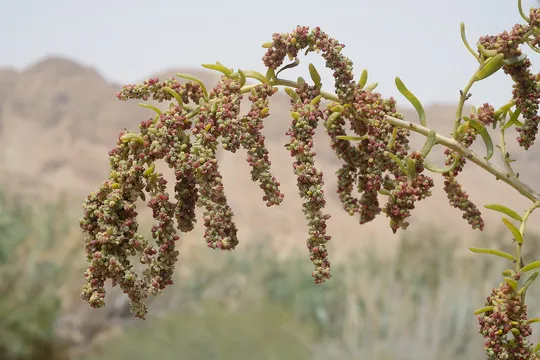
Suaeda monoica is the only Suaeda species that reaches a height of 3-5 meters and is actually a tall shrub or a low tree. The leaves have a flat cross section, not round as in other Suaeda species. The leaves are slightly succulent and release plentiful green sap when squeezed. The inflorescences are dense and clustered at the top of the branches. Flowers are all unisexual (hence the species name), unlike the flowers of other Suaeda species in Israel that are hermaphroditic. The leaves are alternate, densely arranged on the stem, except near the inflorescence where they are few and small.
Grows in the Arava, Dead Sea and Jordan Valley regions. There are dense populations in the Sodom salt marshes – Ne’ot Hakikar, at the mouth of Wadi Zohar, in Wadi Mor, David Stream, Enot Kana and Samar and the Kalya area. In the Arava the species is found in the Evrona, the Eilat and Wadi el Ahmar salt marshes. In the Eilat Mountains, it is found only in the area of the Wadi Raham palms. In the past it was more common in the Jordan Valley, but its range is limited to a single site in the Wadi Tirtsa Reserve west of the Patsa'el Valley (Yair Or, 2000). In 1935 it was collected near the Allenby Bridge).
Humid salt marshes in warm desert areas – “Ka” salt marshes in the desert or in stream and spring flood plains along the Dead Sea shore.
For the species, see S. palaestina. Suaeda monoica is a Sudanese species dominant in humid salt marshes along the Great Rift Valley. The Dead Sea and Jordan Valley are at the northern edge of its global distribution, hence the great importance of the populations in our region.
• During the past decade, there has been extensive development along the Arava and the Dead Sea shores, resulting in the extinction of many populations. The large population at the Wadi Zohar mouth was almost completely destroyed in recent years, and north of it only a few plants remain in Wadi Mor, David Stream, Enot Samar and Enot Kana. The large northernmost population near Kibbutz Kalya was almost completely destroyed following land reclamation for date palm groves. North of Kalya almost all the populations that were recorded in the last century are extinct, with the exception of the population at the mouth of Wadi el Ahmar, which is in a nature reserve. The population in the area of Ne’ot Hakikar is affected by the the groundwater level reduction due to drilling.
• Camels were once the number one “enemy" of Suaeda monoica shrubbery. The literature notes that S. monoica is preferred by camels, hundreds of which thronged to the salt marshes where it grew. Today, at least in Israel and Jordan, agricultural development has become the major threat to the species and to other rare plants growing in the Jordan Valley salt marshes.
• Another threat is the very existence of a tall shrub/tree in the treeless desert landscape. Suaeda branches are used as a source of firewood and for other uses.
Part of the Eilat salt marshes, once occupied by a sizeable Suaeda population should be rehabilitated. The Ne’ot Hakikar salt marsh should be protected and its environment restored. A suitable groundwater regime should be ensured at both sites.
The species has a particularly broad and unique range, which includes a large part of the Sudano-Decanian area along the Great Rift Valley from Israel to the Horn of Africa, and onwards to East Africa, Angola and Senegal. On the other side, it continues eastwards toward the Persian Gulf, India and Sri Lanka.
Suaeda monoica is a Sudanic shrub/tree that dominates the humid salt marshes along the Great Rift Valley. The Dead Sea area and the Jordan Valley are at the northernmost limit of its global distribution, hence the great importance of the populations in our region. The large Suaeda monoica populations that grew at the mouth of Wadi Zohar, in the Eilat salt marshes and in Kalya, decreased significantly and are almost extinct at several sites. A similar fate awaits most of the other populations, whose numbers are currently estimated at 3-30 plants. Suaeda monoica was once very common in the Jordan Valley salt marshes from the Dead Sea to Ǧiftlik, but today, it seems only few plants have survived. The northernmost population known to us today is in the Wadi el Ahmar salt marshes near Patsa'el. The further north we go, the larger the damage and the more important conservation becomes, as these are peripheral populations on a global scale. The intensive development in Israel and in Jordan and the conversion of the Dead Sea shores into agricultural land severely threatens this species.
ויזל, י. ואגמי, מ. 1979. צמחי מלחה בישראל. הוצאת המדור לאקולוגיה, פתח תקווה.
Waisel, Y. and Ovadiah, S. 1972. Biological flora of Israel: Suaeda monoica. Israel J. Bot. 21:
1-11.
Current Occupancy Map
| 1000 squre meter pixel | 5000 squre meter pixel | 10000 squre meter pixel | |
|---|---|---|---|
| number of observations | 0 | 0 | 0 |
| in total pixels | 0 | 0 | 0 |
| Family | Chenopodiaceae |
| Classification | On the endangered species list |
| Ecosystem | Desert |
| Chorotype | Sudano (Saharo- Arab) |
| Conservation Site | Ne’ot Hakikar |
| Rarity |
1
2
6
|
|---|---|
| Vulnerability |
0
3
4
|
| Attractiveness |
0
1
4
|
| Endemism |
0
0
4
|
| Red number |
1
3.2
10
|
| Peripherality | S |
| IUCN category | DD EW EX LC CR EN VU NT |
| Threat Definition according to the red book | Vulnerable |
 Based on:
Based on:
